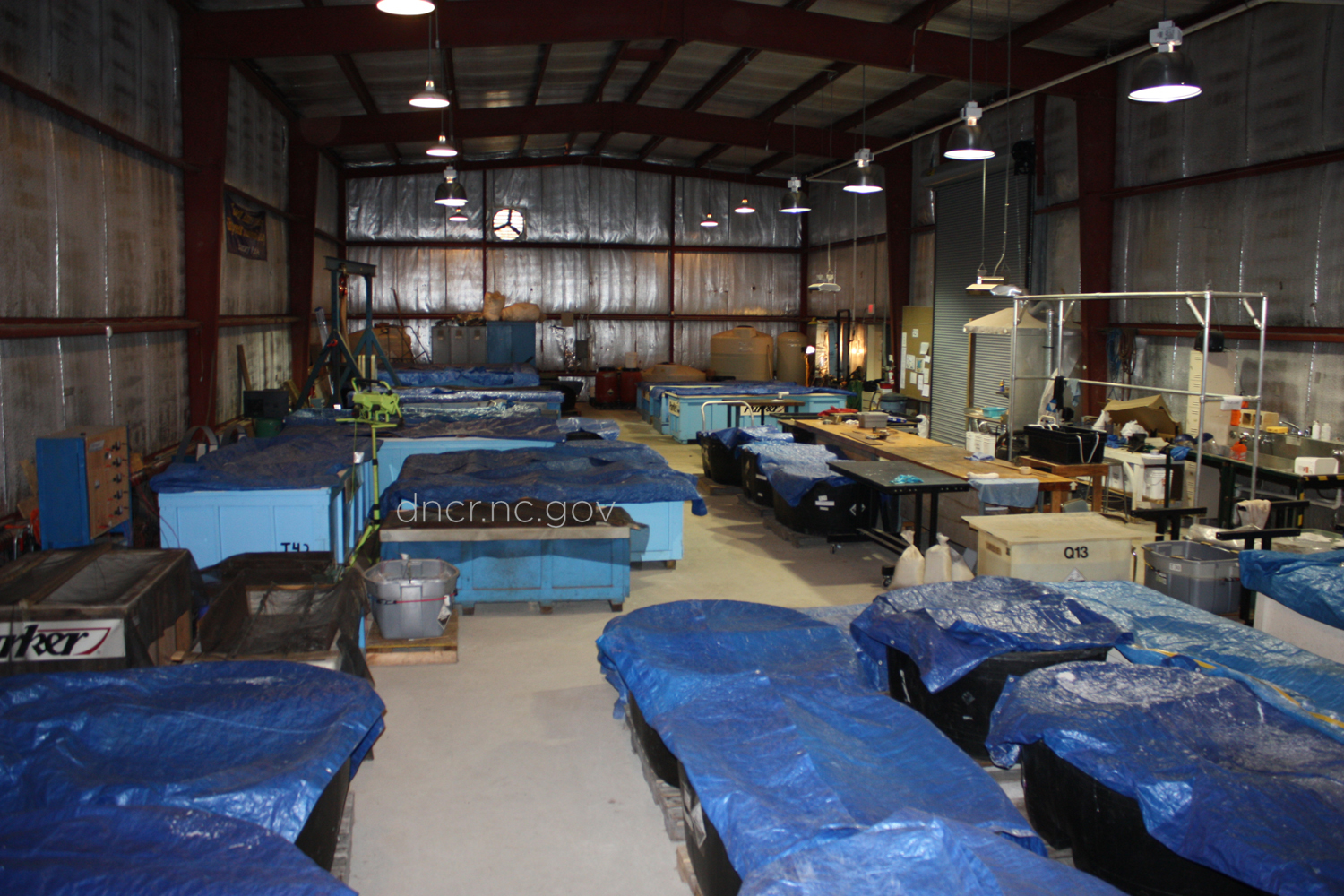This post is by Sarah Watkins-Kenney, QAR Lab Director and the Underwater Archaeology Branch's Chief Conservator.
The N.C. Department of Cultural Resources Queen Anne’s Revenge Conservation Laboratory (QAR Lab) is primarily tasked with the examination, conservation, documentation, and study of artifacts recovered from the shipwreck NCDCR314; Queen Anne’s Revenge (QAR), flagship of the pirate Blackbeard, which sank in 1718.
 The QAR Lab has been located at East Carolina University (ECU) since 2003. Established under a Memorandum of Agreement between NCDCR and ECU its operation is a partnership to "…promote their mutual goals of archaeological and historical research on this important site and the era in North Carolina and world history that it represents." ECU provides facility services, student graduate assistants, and consultation with faculty, while NCDCR is responsible for management of the shipwreck site and direction of the QAR Lab.
The QAR Lab has been located at East Carolina University (ECU) since 2003. Established under a Memorandum of Agreement between NCDCR and ECU its operation is a partnership to "…promote their mutual goals of archaeological and historical research on this important site and the era in North Carolina and world history that it represents." ECU provides facility services, student graduate assistants, and consultation with faculty, while NCDCR is responsible for management of the shipwreck site and direction of the QAR Lab.
There is also close collaboration with the N.C. Maritime Museum in Beaufort, which, as the final repository for treated artifacts, is responsible for their long-term care and interpretation to the public. ECU’s West Research Campus (ECU-WRC) is an excellent location for the QAR Lab with good ground level access to buildings for large vehicles and artifacts and space with the potential for development and expansion of conservation as well as research and education activities.
The QAR Lab includes:
- a wet/dirty small objects lab;
- clean-work lab;
- larger wet/dirty lab;
- photographic studio;
- x-radiography system; and
- an office and documentation room.
 Also, one of the large warehouses on the site is equipped for the storage and treatment of large objects (cannon, ships timbers) and electrolytic reduction treatment of metal finds.
Also, one of the large warehouses on the site is equipped for the storage and treatment of large objects (cannon, ships timbers) and electrolytic reduction treatment of metal finds.
QAR artifact related operations range from in-situ monitoring and preservation, to recovery (including inventory, field storage and transportation of artifacts), and conservation (stable storage, examination and analysis, cleaning, stabilization, data management, and study of artifacts), through to transfer to the North Carolina Maritime Museums repository and display.
The Lab is staffed by three permanent NCDCR staff: QAR Lab Director/Chief Conservator; QAR Conservator/Lab Manager; and QAR Conservator. In addition, depending on annual budgets there are one to three temporary conservation positions, as well as two to six graduate assistants, and volunteers.
As a working conservation lab linked to a major on-going archaeological project, the QAR Lab provides a unique resource for artifact studies as well as for research opportunities and education in conserving artifacts from a marine environment for students and researchers at ECU and for a wider community of archaeologists, museum staff, and other professionals.
Work undertaken by the lab is guided by professional codes of practice as defined by the American Institute for Conservation. The QAR Lab disseminates information on work done through publications and presentations at seminars and conferences and the project’s website.

